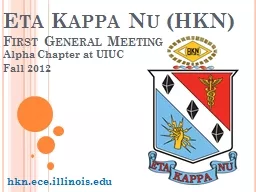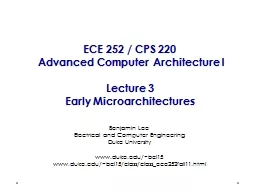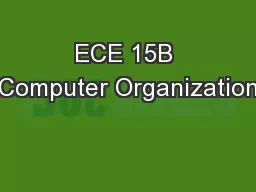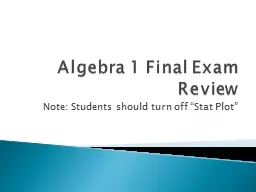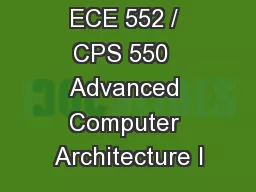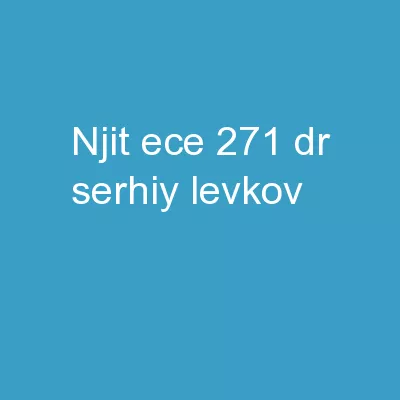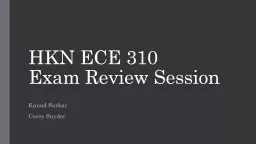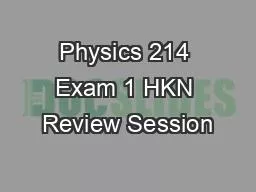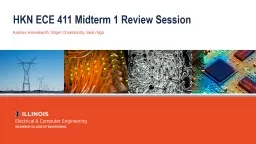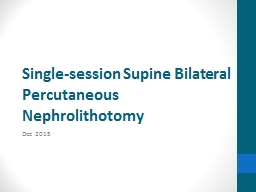PPT-HKN ECE 310 Final Exam Review Session
Author : medshair | Published Date : 2020-06-26
Corey Snyder Ben Eng Topics LSIC Systems and BIBO Stability Impulse Response and Convolution ZTransform DTFT and Frequency Response Sampling Discrete Fourier Transform
Presentation Embed Code
Download Presentation
Download Presentation The PPT/PDF document "HKN ECE 310 Final Exam Review Session" is the property of its rightful owner. Permission is granted to download and print the materials on this website for personal, non-commercial use only, and to display it on your personal computer provided you do not modify the materials and that you retain all copyright notices contained in the materials. By downloading content from our website, you accept the terms of this agreement.
HKN ECE 310 Final Exam Review Session: Transcript
Download Rules Of Document
"HKN ECE 310 Final Exam Review Session"The content belongs to its owner. You may download and print it for personal use, without modification, and keep all copyright notices. By downloading, you agree to these terms.
Related Documents


